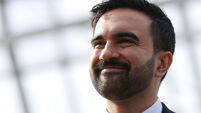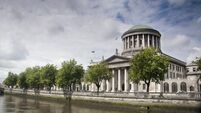We must treasure our biodiversity and natural heritage

One-third of our wild bee species are threatened with extinction by 2030.
This Saturday, the Citizens’ Assembly on Biodiversity Loss will be hosting its very first meeting, and it couldn’t be happening at a more pressing time.
Biodiversity, for those not familiar with the term, is the variety of life on earth. It’s not merely something beautiful to admire from the roadside or our windows. It’s the meadows of native wildflowers and grasses supporting butterflies and bees. It’s the leafy richness of native trees. It’s the birdsong that greets the sunrise and it’s the rush of our rivers. It’s healthy bogs that absorb carbon dioxide and it’s the majesty of creatures underneath our waves.
Our biodiversity is our natural heritage and it is the treasure that was left to us. It’s as important as our music and language and in fact they are intertwined. Birds and wild animals adorn the Book of Kells, and they are the inspiration for Irish poems, poetry and music. Our biodiversity is intrinsic to us.
It also sustains life as we have come to know it. We have evolved as humans alongside the natural world, and everything within the confines of the room you’re reading these very words in comes from nature.
And right now, the state of our biodiversity is in dire condition.
We have pushed nature to its very edge, and as my colleague Pádraic Fogarty from the Irish Wildlife Trust aptly puts it: if we push past irreversible global tipping points on biodiversity, human civilisation as we know it simply cannot continue to exist.
Here in Ireland, there is no shortage of examples of how far we’ve pushed nature to the brink.
Eighty-five percent of our internationally important habitats like peatlands, heaths, species-rich grasslands are in bad condition and are struggling to function properly and to support the wildlife that calls these habitats home. Around just one percent of our island is covered in native forestry, an almost complete eradication of it given that it once covered four-fifths of our land.
There’s also the troubling reality that one-third of our wild bee species are threatened with extinction by 2030, in just 8 years’ time.
While there was a time where our fields were alive with an array of species and our rivers were relatively clean, that sadly is no longer the case.
Since the middle of the last century, driven by policy and markets, our farmland has lost its diversity of habitats and is dominated by monocultures which wildlife shuns. Half of our rivers are now polluted, and ground-nesting birds are on the verge of extinction.
Our upland blanket bog and heath habitats are seriously degraded by overgrazing, illegal fires, and wind farms which are pushing out wildlife like the Hen Harrier, or Skydancer, known for its aerial acrobatics. The uplands are crying out for restoration to stop carbon emissions and restore them to functioning ecosystems.
And further ashore, the picture is also unfortunately quite grim. Unsustainable fishing practices including bottom trawling have devastated our marine habitats and brought sustainable small-scale fishing to its knees as a result.
In particular, less well-off areas tend to have fewer pockets of nature, meaning these aforementioned benefits are often experienced by more affluent populations.
As these numerous examples demonstrate, we are in a crisis. A 2019 declaration from the then-Government recognised this, as Ireland became one of the first countries to declare both a climate and biodiversity emergency. However, we cannot work on one crisis at the expense of the other. We must transform our approach and ensure that the solutions we take address both of these urgent issues simultaneously.
And the good news is - we know there are an array of solutions available to us. We can push for nature-friendly farming and for planting native woodlands in the right places with community participation. We can expand our Marine Protected Areas (MPAs), which the newly launched Fair Seas campaign is working tirelessly on. We can ensure that biodiversity gets the protection it so desperately needs by having a right to nature in the Constitution.
And we know that restoration efforts, when done right, can work. We’ve seen community-led efforts at the Abbeyleix Bog bolster wildlife and the local area. We've witnessed the success of the Rockabill Tern Project, which has seen the population steadily increase and we’ve watched the Burren Life Programme restore habitats in the area through innovative agri-environmental initiatives.
But in order for these solutions to be at the forefront of this Assembly, we’re going to need all the help we can get. We need as many people as possible calling for these measures in submissions to the Assembly, which will help restore our depleted biodiversity, benefit our local communities, and assist in our efforts to address the worsening climate crisis.
The road ahead is challenging, but we’ve all seen firsthand the type of transformative change that a Citizens’ Assembly can bring about. So here’s to the inaugural meeting of this critically important Assembly, and here’s to a better future, for Irish nature, and for the communities it supports.
- Karen Ciesielski, Environmental Pillar coordinator












